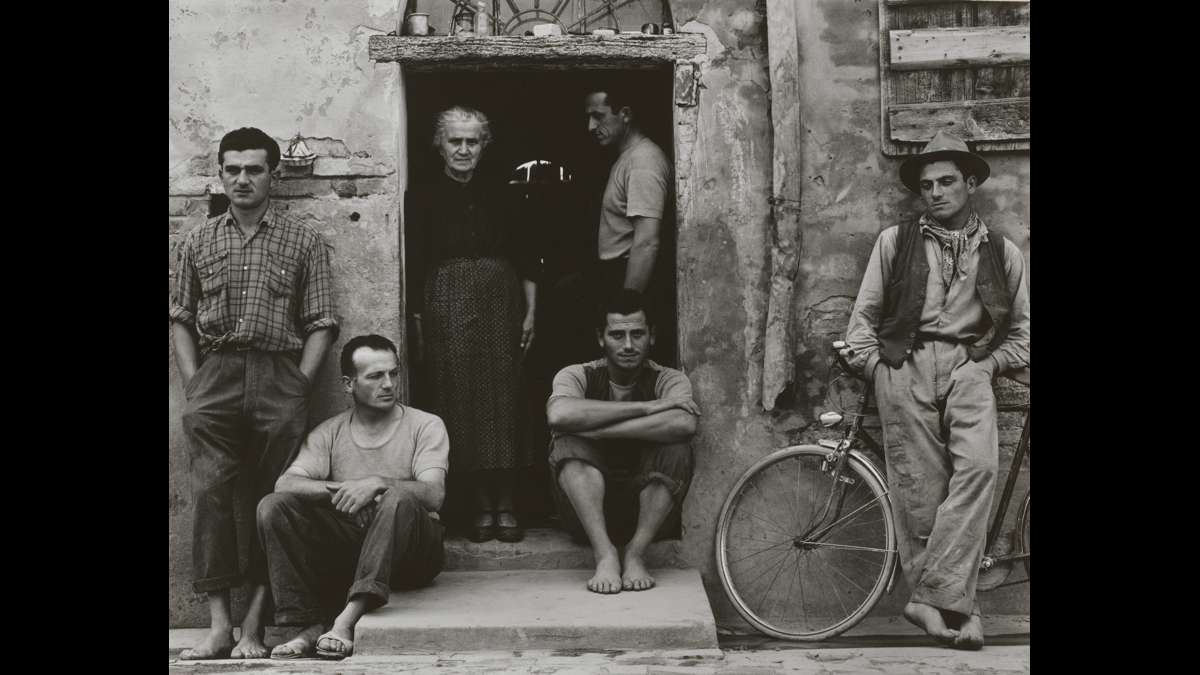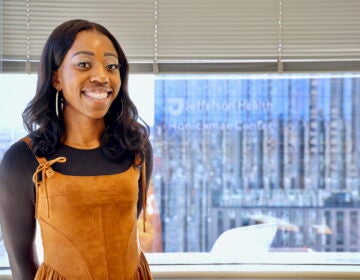Philly Art Museum offers new look at Paul Strand, ‘master of modern photography’
Listen-

-

-

-

-

-

-

Wall Street, New York, 1915. (Courtesy of Philadelphia Museum of Art)
-

Something rather strange happens when looking at Paul Strand’s photographs — an odd feeling of having seen them before. And, in many ways, that’s true.
Strand’s visual imprint is evident in the way we see things, in the way we frame the images of everyday life, in the intensity of portraits that look right at us, in advertising, cinematography and art.
Philadelphians will have a greater opportunity to experience that familiar visual language following the Museum of Art’s recent acquisition of 3,000 Strand photographs. The museum, which now holds the largest collection of the revolutionary American photographer’s work in the world, is presenting the first major retrospective devoted to Strand in nearly 50 years.
Strand’s work is so recognizable because of its profound influence on the art form, according to photographer Bruce Katsiff, former director of the Michener Art Museum.
“Every photographer who was studying photo in America in the ’50s, ’60s, ’70s and ’80s was influenced by Paul Strand,” Katsiff said. “And remember, half of the freshmen in the ’60s in American universities were studying photography, photo was just exploding.”
Photography curator Peter Barberie worked for four years to put the Philadelphia Museum of Art’s comprehensive exhibition of photos and films, “Paul Strand: Master of Modern Photography,” that encompasses all stages of the life of the artist who died in 1976.
Strand firmly believed that photography was one of the great art forms of the 20th century.
“When he began making pictures, this was not a widely held opinion. Many people didn’t take photography very seriously, they thought this was just a documentary mode,” Barberie said. “Strand really believes that photography’s ability to show specific moments and specific places was a real contribution to the world of picture making.”
Strand was very deliberate in the selection of his subjects — a park, a tree, buildings or portraits. He took his time framing each photo, careful to bring together the right elements of light , composition and meaning — almost like a poet selecting each word and punctuation.
His process was perhaps the opposite of spontaneity, yet each photo has the clarity and directness of shared passing moments.
Turbulent times, fascinating subjects
Strand, born in 1890, was also an explorer of his times and traveled from place to place to create photographic books.
As a true son of the changing world around him, he was drawn to images that reflected a social and personal reality. That influenced his traveling, said museum assistant curator Amanda Bock, who with Barbiere wrote the 400-page publication that accompanies the exhibition.
“Over the course of his long career, working everywhere from New England, to Ghana, to Egypt, he really presents us with a very particular and specific fascinating look back at a century that we have just come out of,” Bock said.
For instance, he went to Ghana in 1963 at the invitation of its first president, Kwame Nkrumah, who was then overthrown in a military coup. It was a time of great change in the country.
“In Italy in 1953 for this postwar recuperation of Italian identity, and in New England, he is there during World War II, he’s thinking of his feeling as an American largely of the progressive left — who under McCarthyism was feeling less and less at home in his own country,” she said.
In Mexico he filmed documentaries of working people, fishermen, for instance, hauling the fish-laden nets on the beach. When he was not photographing people deliberately, Strand was so focused on finding the authentic in everyday life that he rigged his camera, Barberie said.
“He also used a prism in his lens once in a while and would set himself up in a public space with his camera and really just wait for as long as it took for people to get used to his presence and forget about him,” Barberie said. “He appeared to be aiming his camera in one direction and was photographing people off to his side.
Strand’s vocabulary is so relevant today that the museum invited a group of young contemporary artists to do a series of Instagram takeovers to look for the Strand-like imagery in the city. The web project is open to the public and lives in the museum’s web site as an open competition. It has already received 300 entries
“Paul Strand: Master of Modern Photography” continues through Jan. 4 at the Philadelphia Museum of Art before traveling to Switzerland, Madrid and London.
WHYY is your source for fact-based, in-depth journalism and information. As a nonprofit organization, we rely on financial support from readers like you. Please give today.




